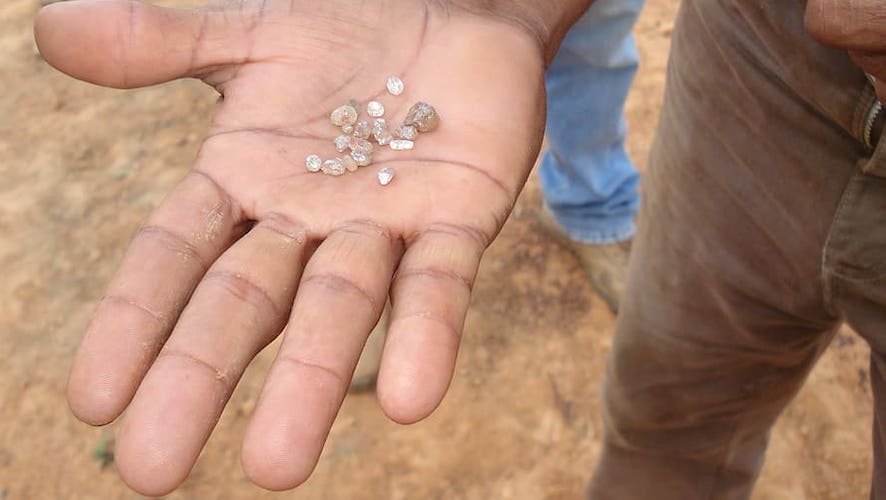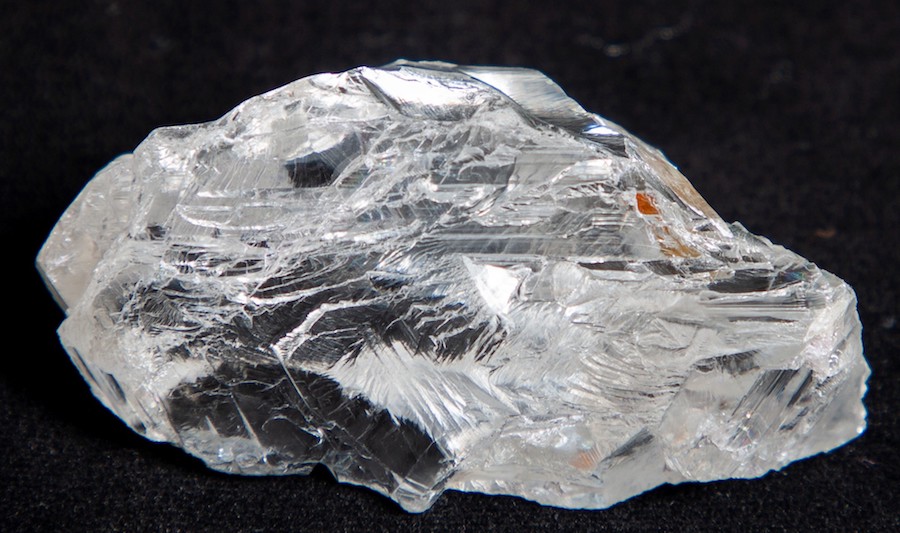PHILOSOPHER'S STONE
How nature recycles organic material to create diamonds
MINING.COM Staff Writer | August 24, 2021 \

(Reference image from Pxfuel).
A new study published in the journal Scientific Reports found that the Earth’s deepest diamonds are commonly made up of former living organisms that have been recycled more than 400 kilometres below the surface.

According to the paper produced by researchers at Australia’s Curtin University, both diamonds found in oceanic rocks and the so-called super-deep continental diamonds share a common origin of recycled organic carbon deep within the Earth’s mantle
The document states that Earth’s engine turns organic carbon into diamonds many hundreds of kilometres below the surface and then ballooning rocks from the deeper mantle, called mantle plumes, carry the diamonds back up to the Earth’s surface via volcanic eruptions.
THIS RESEARCH PROVIDES A MODEL THAT EXPLAINS THE FORMATION AND LOCATIONS OF OCEANIC, SUPER-DEEP CONTINENTAL AND LITHOSPHERIC DIAMONDS
“While recycling is becoming a modern-day necessity for our sustainable survival, we were particularly surprised to learn, through this research, that Mother Nature has been showing us how to recycle with style for billions of years,” Luc Doucet, lead author of the study, said in a media statement.
Doucet and his team reached these conclusions by analyzing the carbon isotopic compositions of three major types of diamonds, namely, oceanic, super-deep continental and lithospheric diamonds, all of which are formed at different levels of the mantle with a varying mixture of organic and inorganic carbon.
“This is the first time that all three major types of diamonds have been linked to mantle plumes, ballooning hot rocks driven by plate tectonics and the supercontinent cycle from deeper Earth,” co-lead author, Zheng-Xiang Li, said in the press brief.
For the scientists, this research not only provides a model that explains the formation and locations of the three types of gemstones, but it also helps to understand the planet’s carbon cycle, while at the same time having the potential to unlock more secrets of the Earth’s dynamic history through tracking the past locations of mantle plumes and superplumes. In their view, the latter can be achieved by mapping out the distribution of both continental and oceanic diamonds.
One mystery remained unsolved, though, and that is the reason why diamonds formed in the so-called ‘mantle transition zone,’ 400 to 600 kilometres deep, utilized recycled organic carbon only.
“This might have something to do with the physical-chemical environment there”, Li said. “It is not uncommon for a new scientific discovery to raise more questions that require further investigation.”
MINING.COM Staff Writer | August 24, 2021 \

(Reference image from Pxfuel).
A new study published in the journal Scientific Reports found that the Earth’s deepest diamonds are commonly made up of former living organisms that have been recycled more than 400 kilometres below the surface.

According to the paper produced by researchers at Australia’s Curtin University, both diamonds found in oceanic rocks and the so-called super-deep continental diamonds share a common origin of recycled organic carbon deep within the Earth’s mantle
The document states that Earth’s engine turns organic carbon into diamonds many hundreds of kilometres below the surface and then ballooning rocks from the deeper mantle, called mantle plumes, carry the diamonds back up to the Earth’s surface via volcanic eruptions.
THIS RESEARCH PROVIDES A MODEL THAT EXPLAINS THE FORMATION AND LOCATIONS OF OCEANIC, SUPER-DEEP CONTINENTAL AND LITHOSPHERIC DIAMONDS
“While recycling is becoming a modern-day necessity for our sustainable survival, we were particularly surprised to learn, through this research, that Mother Nature has been showing us how to recycle with style for billions of years,” Luc Doucet, lead author of the study, said in a media statement.
Doucet and his team reached these conclusions by analyzing the carbon isotopic compositions of three major types of diamonds, namely, oceanic, super-deep continental and lithospheric diamonds, all of which are formed at different levels of the mantle with a varying mixture of organic and inorganic carbon.
“This is the first time that all three major types of diamonds have been linked to mantle plumes, ballooning hot rocks driven by plate tectonics and the supercontinent cycle from deeper Earth,” co-lead author, Zheng-Xiang Li, said in the press brief.
For the scientists, this research not only provides a model that explains the formation and locations of the three types of gemstones, but it also helps to understand the planet’s carbon cycle, while at the same time having the potential to unlock more secrets of the Earth’s dynamic history through tracking the past locations of mantle plumes and superplumes. In their view, the latter can be achieved by mapping out the distribution of both continental and oceanic diamonds.
One mystery remained unsolved, though, and that is the reason why diamonds formed in the so-called ‘mantle transition zone,’ 400 to 600 kilometres deep, utilized recycled organic carbon only.
“This might have something to do with the physical-chemical environment there”, Li said. “It is not uncommon for a new scientific discovery to raise more questions that require further investigation.”
Petra sells two rare diamonds for $13.5 million
Cecilia Jamasmie | August 25, 2021

The 342.92 carat Type IIa white diamond. (Image courtesy of Petra Diamonds.)
South Africa’s Petra Diamonds (LON: PDL) has sold its recently recovered 342.92-carat Type IIa white diamond and an 18.30-carat Type IIb blue diamonds for a combined $13.5 million.

The company said it will receive upfront payments of $10 million for the white stone and $3.5 million for the blue stone, both recovered at its iconic Cullinan mine.
The buyer is a partnership between Petra itself and the South African subsidiary of Stargems Group, an international and vertically integrated diamond company, which will cut and polish the stones.
TYPE II DIAMONDS ARE FOUND LESS FREQUENTLY AND ARE MORE VALUABLE THAN TYPE I DIAMONDS, AS THEY HAVE NO MEASURABLE NITROGEN IMPURITIES.
“We are delighted that both stones will be manufactured in South Africa, and it is fitting that we will be working with Stargems, who specializes in the sourcing and supply of the finest diamonds to customers across the world,” chief executive Richard Duffy said in the statement.
Petra fetched in March $12.2 million for a 299.3-carat Type IIA white diamond. That meant it obtained $40,701 per carat, which exceeds the $34,386/ct received for the 424.89-carat “Legacy of the Cullinan Diamond Mine” in May 2019.
Type II diamonds are found less frequently and are more valuable than Type I diamonds, as they have no measurable nitrogen impurities.
Type IIb blue diamonds are so rare that their age has not been established. Recent studies on minerals trapped inside these diamonds imply that they are among the deepest-formed diamonds ever found, created at depths in excess of 500km below the Earth’s surface.
Cullinan is known as the birthplace of the famed 3,106-carat Cullinan diamond, which was cut to form the 530-carat Great Star of Africa.
It’s also the world’s most important source of blue diamonds, such as the 39.34-carat stone Petra found in April and which sold for $40.2 million last month. It was the company’s highest price ever for a single stone.
No comments:
Post a Comment